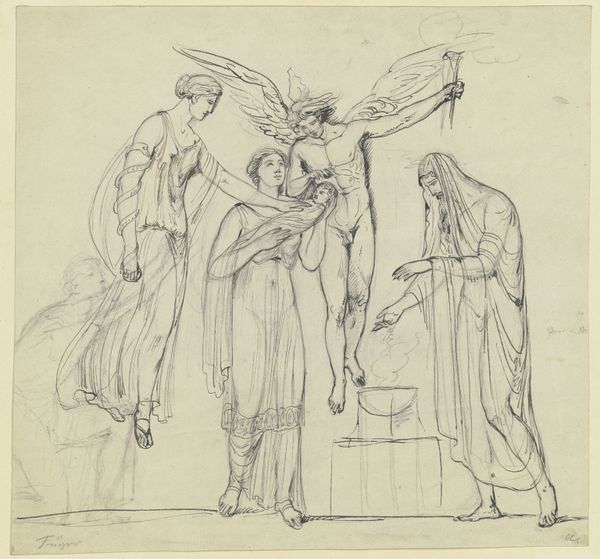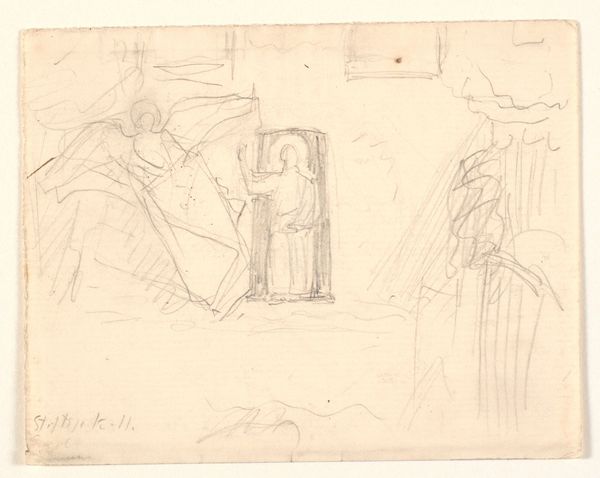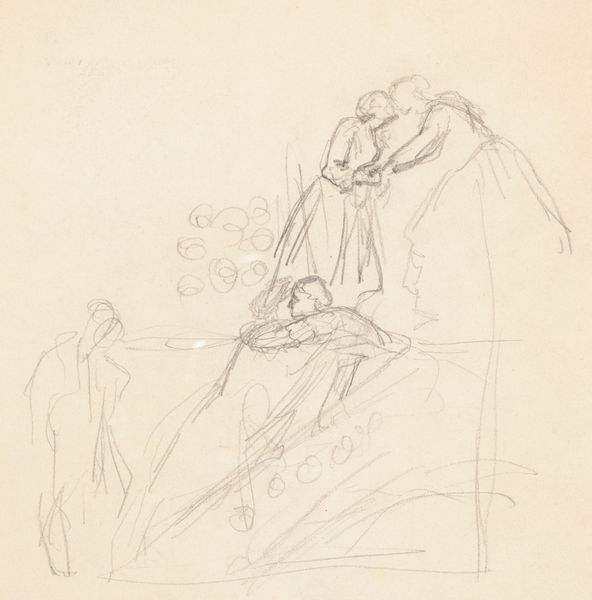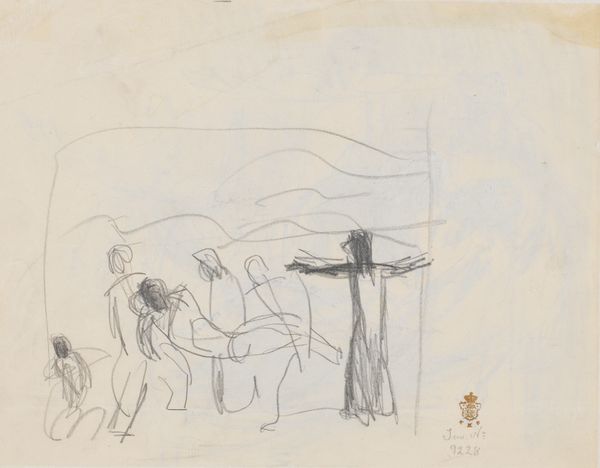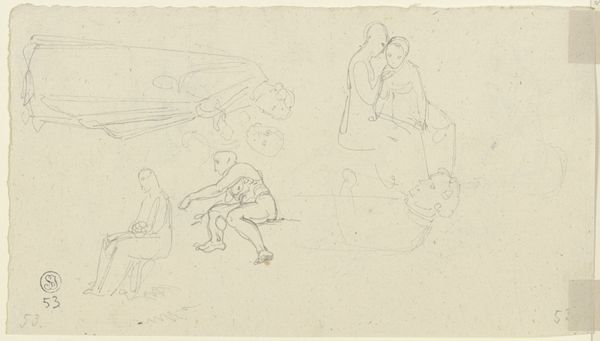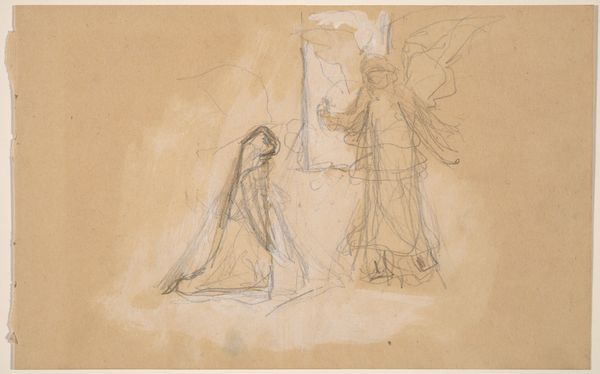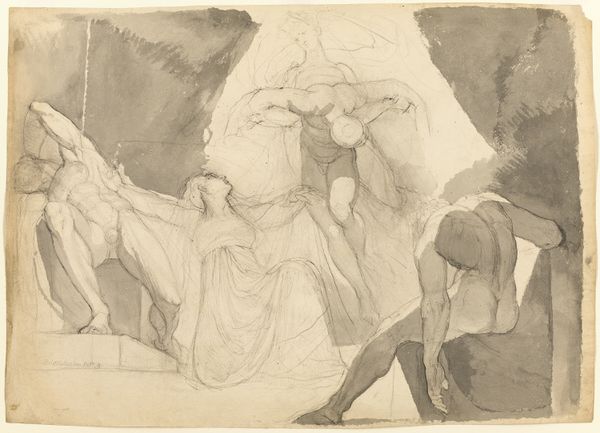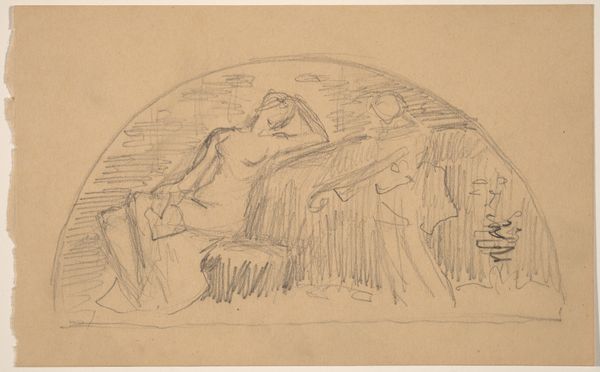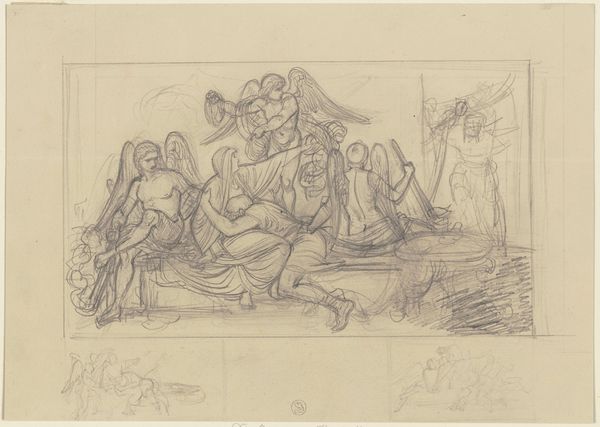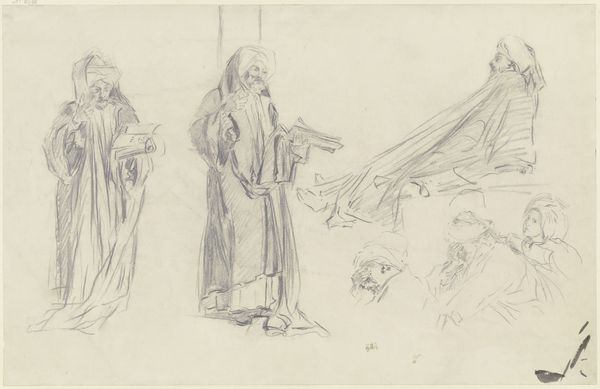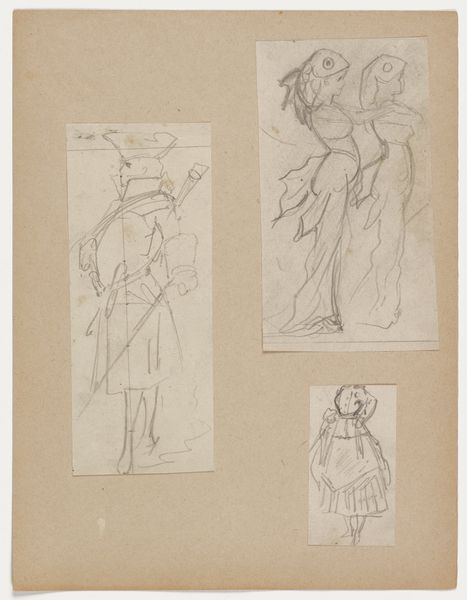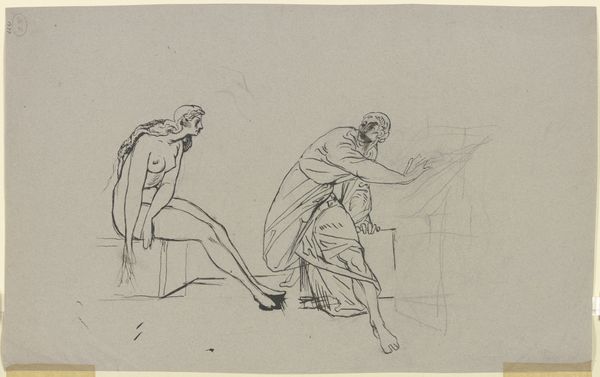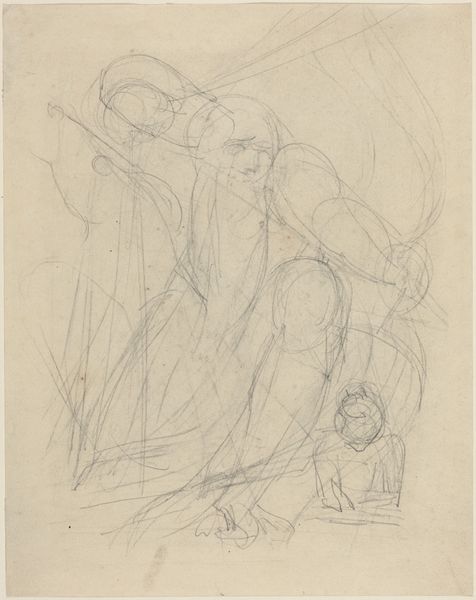
drawing, paper, pencil
#
drawing
#
landscape
#
figuration
#
paper
#
pencil
Dimensions: sheet: 11.6 × 18.5 cm (4 9/16 × 7 5/16 in.)
Copyright: National Gallery of Art: CC0 1.0
Curator: This drawing, titled "Studies for a Panel," by Charles Sprague Pearce, dates from somewhere between 1890 and 1897. It's rendered in pencil on paper, giving it a delicate, almost ethereal quality. Editor: It feels incredibly fragile, like catching a glimpse of a fleeting memory. The figures are so lightly sketched, they seem ready to fade away completely. What is it that draws your eye initially? Curator: The figure on the left, I think, with the parasol—she commands the space. And next to her, it seems she is admiring a framed painting that showcases scenes of other figures, who all together create such depth within a seemingly simple piece. Given Pearce’s background, particularly his connection to the American expatriate community in France, it’s easy to view this sketch as indicative of themes like leisure, societal structure and femininity, through the gaze of a specific socio-economic bubble. Editor: That’s interesting. I hadn't considered the expatriate context specifically, but now that you mention it, it does lend another layer. How do you read the sketch in relation to the history of visual culture at the end of the 19th century? I’m wondering, what is being observed within a scene of observers? Curator: Well, within fin-de-siècle sensibilities there was a fascination with psychological interiority that mirrors a focus on the external representation of people in elite societies—anxiety, disillusionment and ennui are being channeled formally by emphasizing spontaneity and transience. We're left peering through layers—pencil strokes representing not just figures, but social constructs. Editor: I appreciate that, locating it within those themes is really valuable, giving new perspectives. I also wonder whether we aren't supposed to feel a certain exclusion in this moment, since our presence and perspectives are already mediated, our understanding already layered. Curator: Absolutely! And perhaps that mediated space is exactly what Pearce wanted us to confront. Art wasn't merely representational, but invitational to introspect! Editor: It's left me with much more to think about in such little time!
Comments
No comments
Be the first to comment and join the conversation on the ultimate creative platform.
